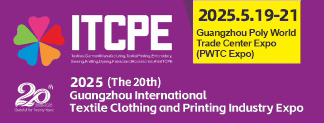The Future Market Insights is anticipated to register a healthy CAGR of a magnitude of 5.4% over the projection period from 2022 to 2032. The global textile colorant market is expected to reach a valuation of US$ 6,850.0 Mn in 2022 and is predicted to surpass a valuation of US$ 11,590.4 Mn by 2032.
The growth in the market is attributed to the rising demand for clothes along with an increase in disposable income across the world is expected to boost demand in the global textile colorant market during the forecast period.
Growth in the demand for fashion textiles and home decor are prominent growth driving factors for textile colorants. East Asia region is expected to remain the dominant region for the production & consumption of textile colorants and the region is expected to account for about 48% of global textile production.
Various countries like India & ASEAN from South Asia also account for a remarkable share of the global market. Demand for textile colorants is expected to account for around 9 to 11% of the global colorants’ consumption.
According to the analysis of Future Market Insights, the global market if textile colorants market’s historical analysis witnessed growth at a CAGR of 5.0% from 2017 to 2021.
In addition to that, as per the current estimations, the forecast growth outlook revolves around 5.4% CAGR over the current projection ranging from 2022 to 2032. The growth of the market is attributed to the rise in the projections in the textile industry and recovery from the pandemic crisis.
Key Takeaways
- Technical textiles are known as special textile qualities made up of particular chemicals and physical properties that are designed for specific end uses. These types of textiles are utilized in healthcare, sports, engineering, and consumer goods industries for specific purposes such as raincoats and body warmers. Demand for these textiles is surging owing to the changing consumer preferences, customization options, and perceived effectiveness of these products.
- Geotextiles known as a type of technical textile utilized in geotechnical applications are gaining rapid traction over the assessment period owing to growing environmental concerns. This factor is expected to bolster the demand for geotechnical textiles.
- In addition to that, neon dyes utilized in athletic apparel offer highly reflective properties, supporting safety measures for athletes competing in cross-country and marathon events. Owing to such numerous properties, the demand for dyes for the production of technical textiles is constantly increasing.
- One of the prominent factors inhibiting the growth of the textile dye market is its low sustainability. It has been estimated that more than 1,000 liters of water are required to produce 1 kg of dye. In addition, the dyeing process consumes a significant amount of water, which results in the degradation of the environment. Furthermore, throughout the dyeing process, a large amount of dye is combined into the wastewater, causing pollution of natural water resources.
- Several prominent environmental authorities and regional governments have strictly regulated the wastes from dyeing industries and imposed restrictions on the use of hazardous chemicals during the manufacturing processes. The surging development of natural dyes and the promotion of biodegradable materials can benefit the market to expand in spite of these regulations.
Competitive Landscape
The market is fragmented and diversified with the presence of major company players offering over 10,000 variants of textile colorants. Prominent market players in textile colorants are concentrating on product innovations and partnerships with other market players to increase their portfolio & consumer base.
In addition to that, the rapid expansion of strategy incorporates expansions, and geographical expansions in the emerging economies to bolster the stronghold in the market. Dominant market players are investing in research and innovations for product development along with introducing sustainable products to minimize the carbon footprint.











